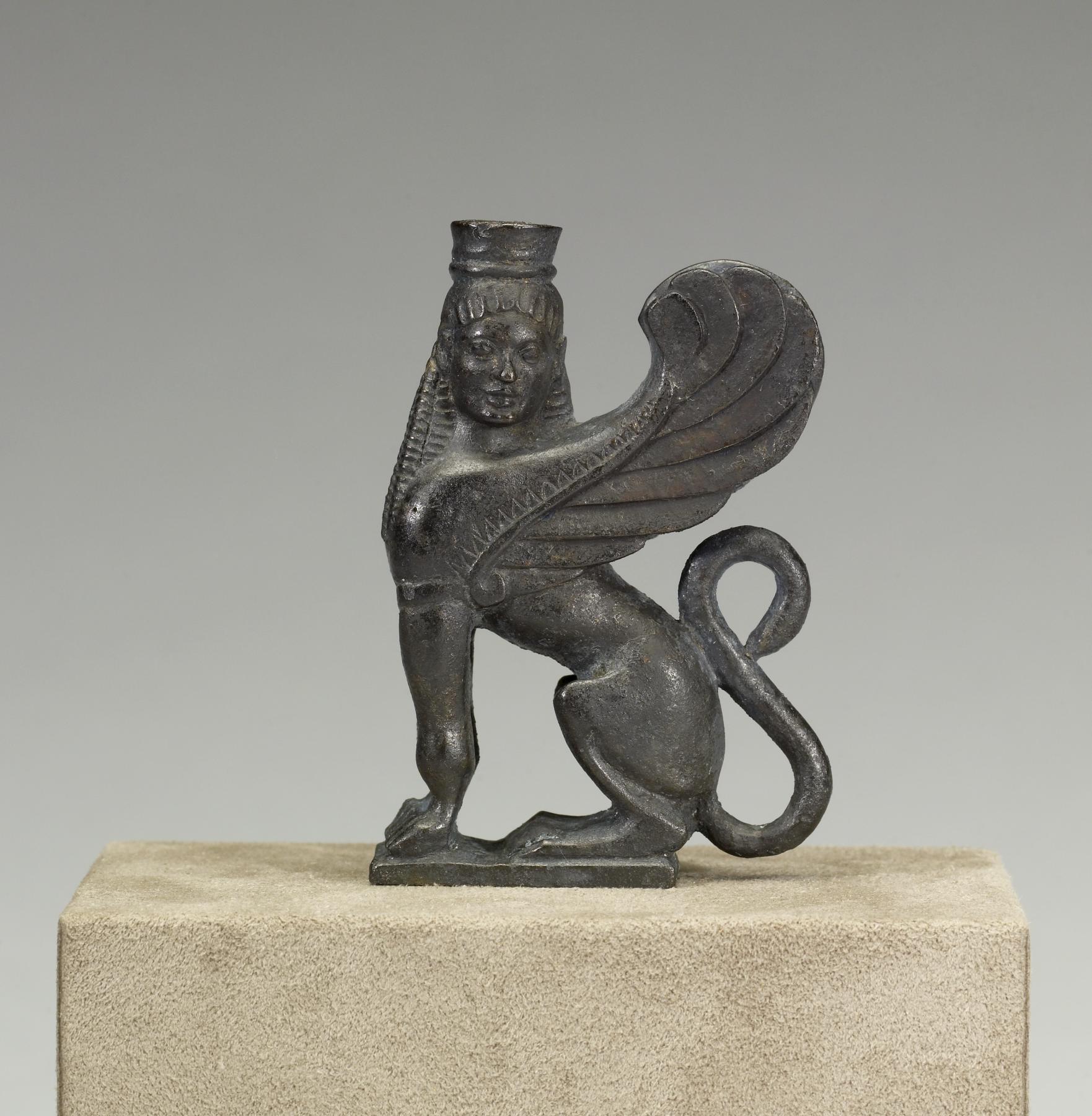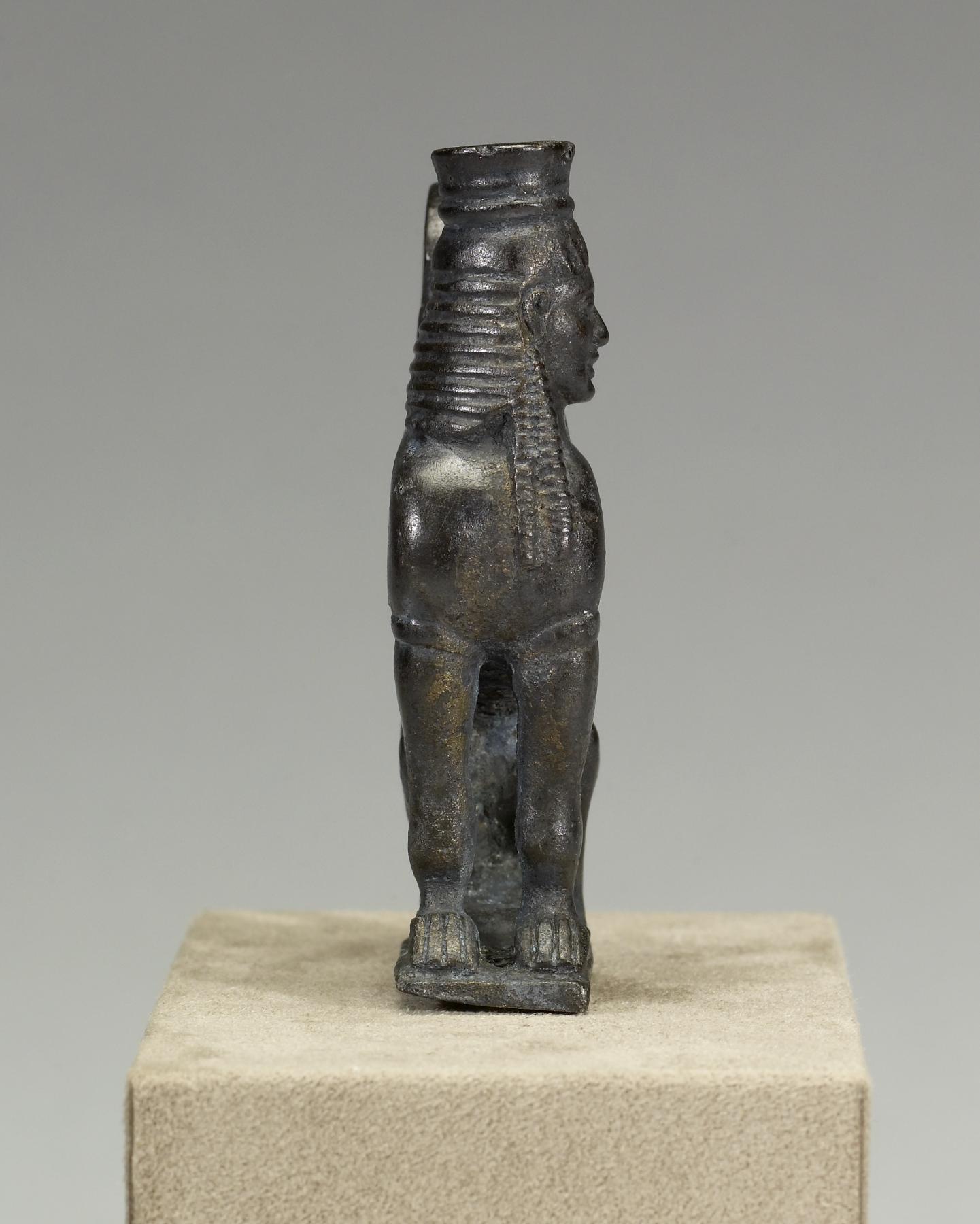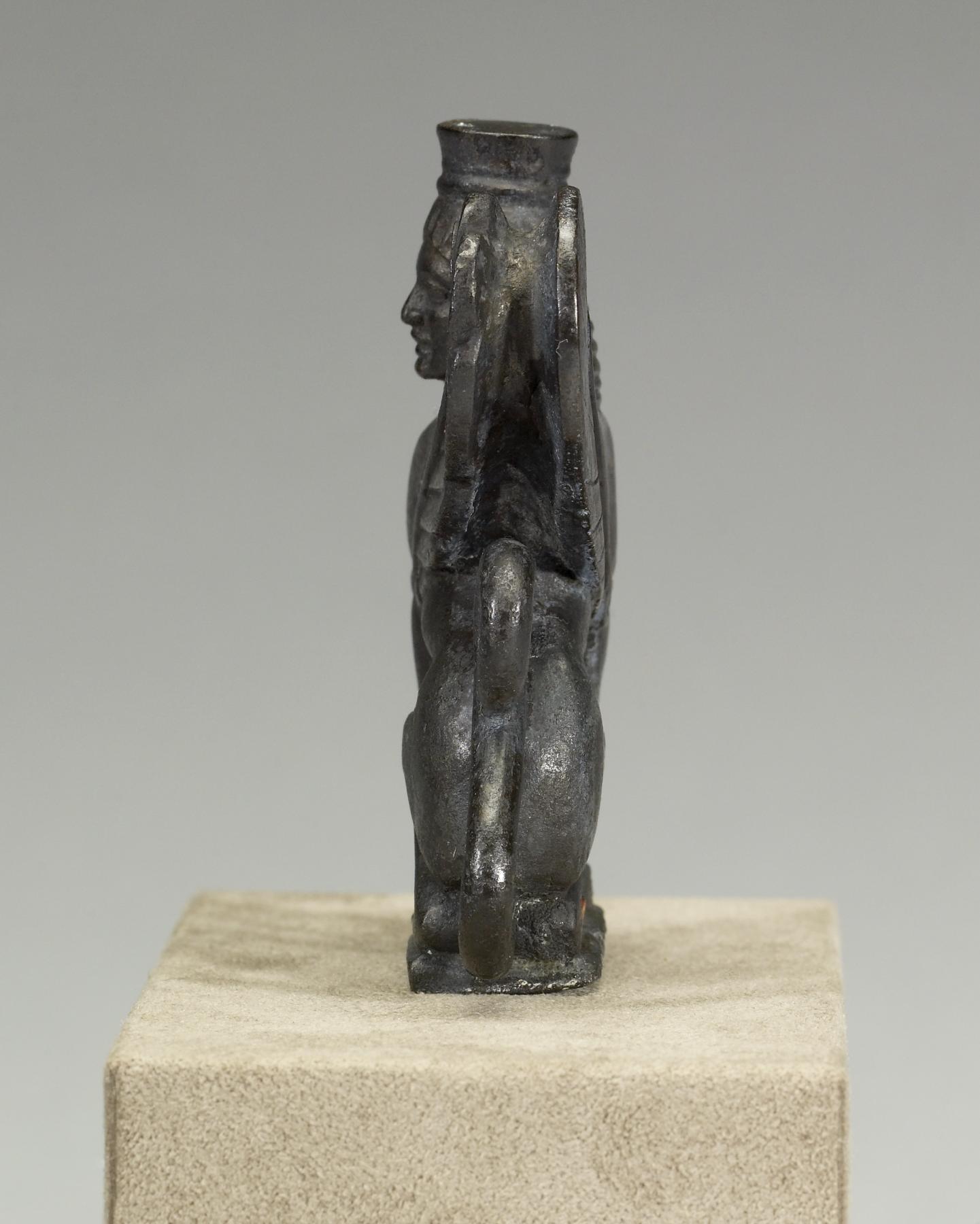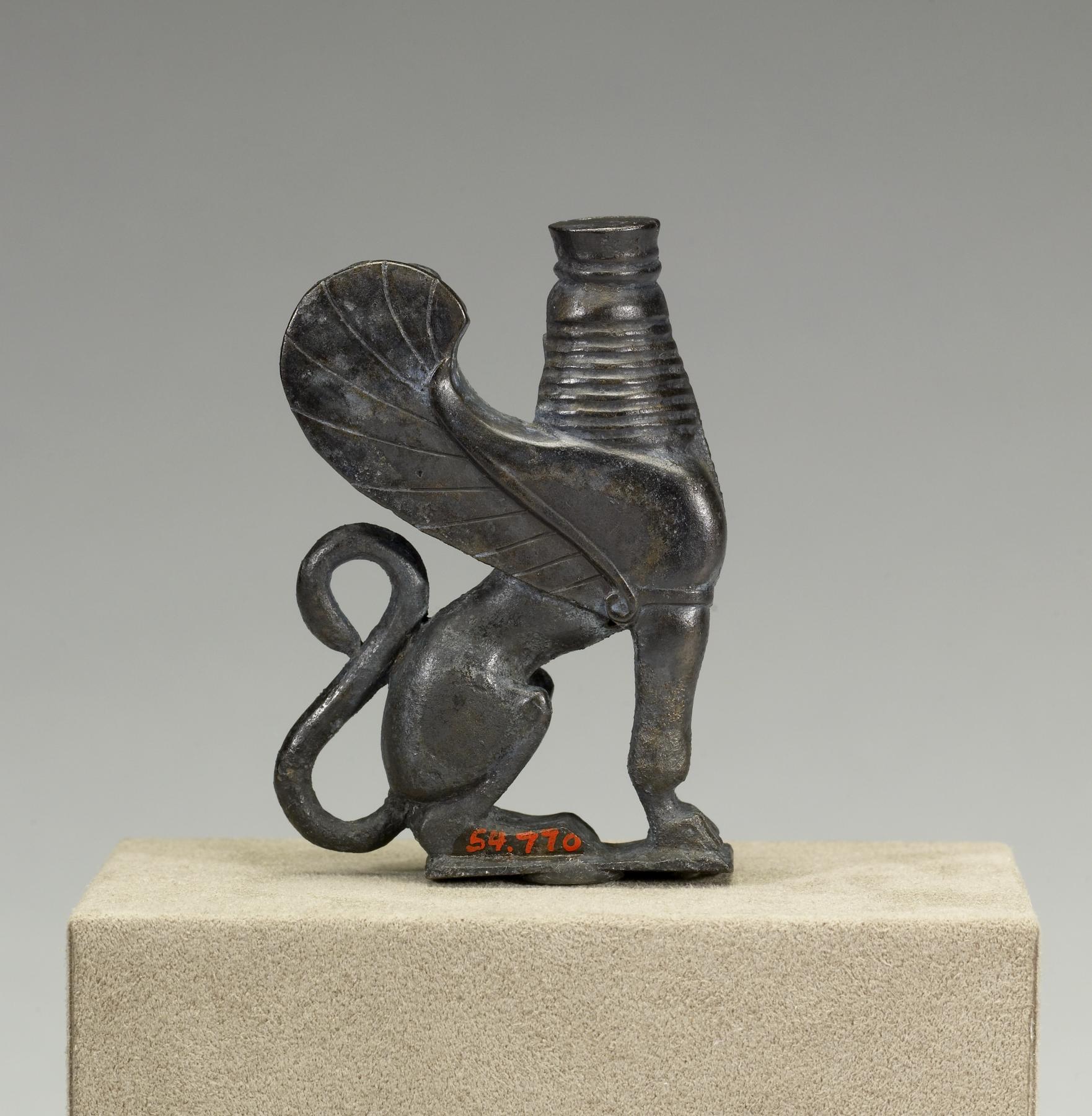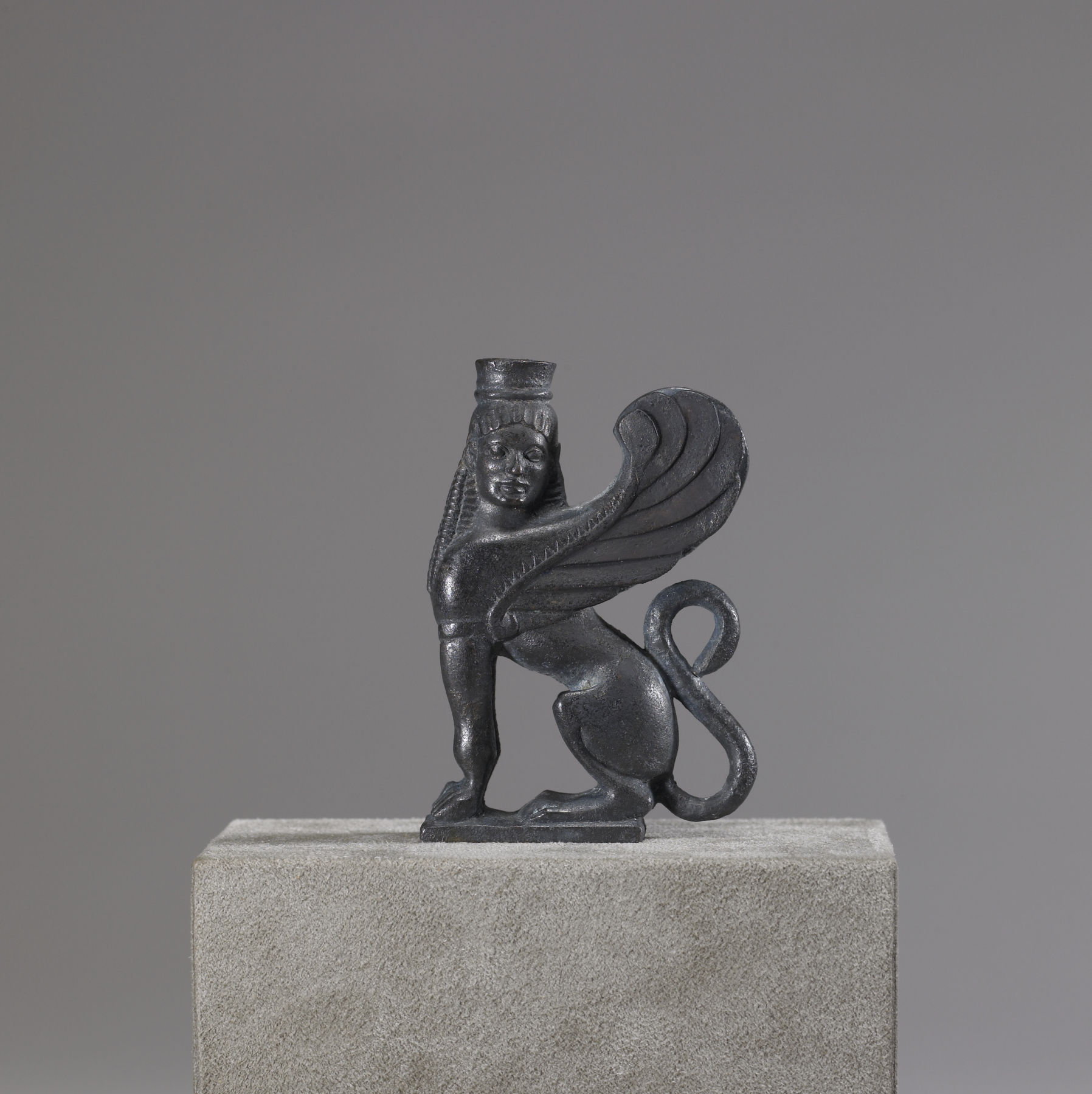Sphinx
(Ancient Greece )
"Sphinx, dog of Hades, whom are you guarding, watching over the dead?"-funerary inscription from Thessaly.
The role of the sphinx as a guardian spirit was often a funerary one. Like the griffins that adorned earlier cauldrons of the Orientalizing period, sphinxes such as this one served as "watchdogs" over the precious contents of bronze vessels, which sometimes held the cremated remains of the deceased.
Provenance
Provenance (from the French provenir, 'to come from/forth') is the chronology of the ownership, custody, or location of a historical object. Learn more about provenance at the Walters.
Lambros Collection [date and mode of acquisition unknown]; Jean P. Lambros and Giovanni Dattari Sale, Paris, June 17-19, 1912, lot 214 [said to be from Lokri]; Henry Walters, Baltimore, 1912, by purchase; Walters Art Museum, 1931, by bequest.
Exhibitions
| 1953-1954 | Flight, Fantasy, Faith, Fact. Dayton Art Institute, Dayton. |
Conservation
| Date | Description | Narrative |
|---|---|---|
| 9/1/1960 | Treatment | cleaned; mounted |
| 9/23/1960 | Treatment | cleaned |
| 9/23/1960 | Treatment | stabilized |
| 4/17/1962 | Treatment | stabilized; other |
Geographies
Italy, Magna Graecia (Locri Epizephyrii) (Place of Origin)
Measurements
2 7/8 x 1 15/16 x 11/16 in. (7.3 x 5 x 1.8 cm)
base: 5/8 x 1 15/16 x 1 3/16 in. (1.6 x 5 x 3 cm)
Credit Line
Acquired by Henry Walters, 1912
Location in Museum
Accession Number
In libraries, galleries, museums, and archives, an accession number is a unique identifier assigned to each object in the collection.
In libraries, galleries, museums, and archives, an accession number is a unique identifier assigned to each object in the collection.
54.770

